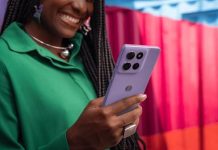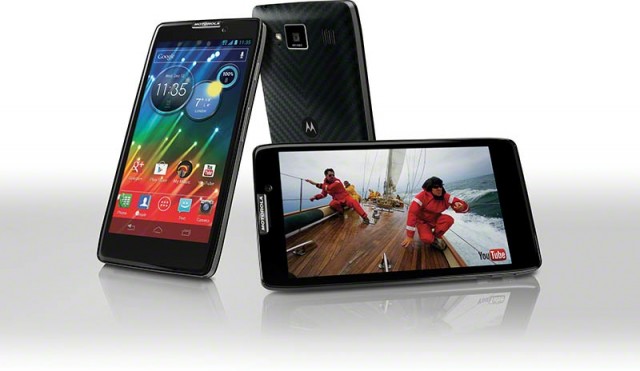
Motorola and Telstra held a joint event this morning in Sydney promoting the Razr HD and Razr M phones. While there weren’t really any surprises about the phones themselves (they’ve been covered fairly extensively since their launch a couple of weeks ago in the US), the big news is that the Razr HD is available today from Telstra stores.
Tia and I arrived at about 9am to find that Motorola had appropriately decked out the entrance to the Museum of Contemporary Art with an Android army!

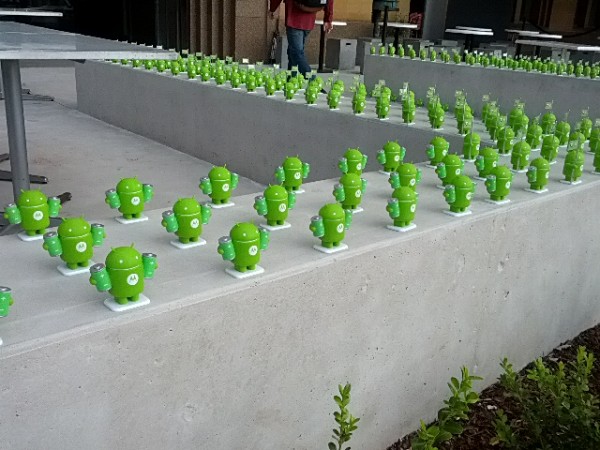
After a while, we went upstairs for the presentation. Motorola made a big deal about bringing the devices straight from New York to Sydney.

Devices
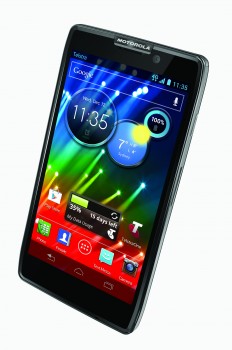
Razr HD
2500 mAh battery
4.7″ Super AMOLED display
LTE and Dual Channel HSPA
1.5 Ghz dual core CPU
1 GB RAM
16 GB internal storage
MicroSD expandable (32 GB SD cards)
$720 outright, $5/month on a $60 plan
Available now!
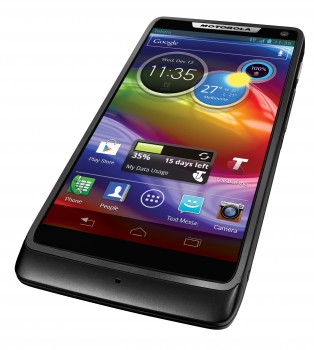
Razr M
2000 mAh battery
4.3″ Super AMOLED display
LTE and Dual Channel HSPA
1.5 Ghz dual core CPU
1 GB RAM
8 GB internal storage
Micro SD expandable (32 GB SD cards)
$600 outright, $0/month on a $60 plan
Available in November
Presentation
Timo Brouwer, Motorola Mobility ANZPI’s Managing Director and Andrew Volard, Telstra’s Director of Device Management took to the stage to tell us about Motorola’s smartphone strategy and give us some insight into the design and development of the HD and M devices.

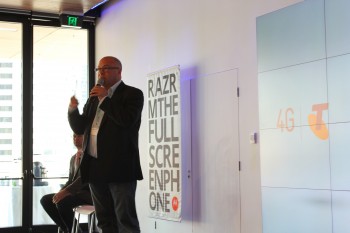
When discussing Google’s acquisition of Motorola Mobility, it was interesting to hear the term “partnership” used, although later in the session this became a more direct “we’re owned by Google”.
Interestingly, Motorola’s market research has shown that consumers find Android too “complex”, and so Motorola’s made changes to their Android launcher to try to put the functionality users need frequent access to into the home screen.
Australia’s love of the smartphone is increasing – Motorola’s statistics showed that our market is now 52% smartphones, up from 37% just a year ago.
Timo brought up statistics showing that the service getting the most usage from phones is Maps. This is likely to cause some controversy, although he did say social media is a close second. This is a point Motorola has been leveraging with its use of the #iLost hashtag on Twitter since the iPhone 5 launch.
The big point here is that we’re using data-heavy services more and more on our devices, and this is putting a heavy strain on our batteries. Motorola says they’ve listened to user feedback and have focused on three areas with the new Razr devices: Speed, Power Management and “the Best of Google”.
Speed refers to data download speeds – this is where the LTE focus comes into play. The devices also feature dual channel HSPA for faster speeds on 3G, which Telstra was also keen to highlight.
For Power Management, Motorola’s all about the big batteries. The HD has a 2500 mAh battery and the M is packing 2000 mAh. To help you keep as much of that juice in reserve as possible, Smart Actions offer some power-saving options at appropriate times. For example, as your battery life dips the phone will ask if you want to disable Wifi, dim the display, etc.
The Best of Google is pretty self-explanatory, a reference to Google’s suite of apps that are bundled with the devices. The Razr HD is the first phone to ship with Chrome pre-installed.
The devices ship with Ice Cream Sandwich, with Motorola promising an upgrade to Jellybean “by Christmas” for the HD, and early 2013 for the M. This is dependant on Telstra’s update approval process.
The main features Motorola highlights on the construction side are the use of kevlar in the device’s body (given the edge-to-edge nature of the screens this mainly refers to the backs), Corning’s Gorilla Glass featured up front, and they’re keen on the fact that the entire device (jacks included) is water-repellant (coated with the same water repellant coating from P2I that Motorola’s been using in recent handsets). HD Voice also features when used on Telstra’s network (and with a compatible handset at the other end).
The devices are exclusive to Telstra through to the end of the year, and will be available in Telstra stores as well as from Telstra dealers.
Questions
I guess because the devices weren’t a mystery, there weren’t many questions about the devices themselves. Interesting nuggets of information:
- The Razr Maxx HD was “for Verizon” and is only going to the US market.
- The Razr I will not be coming to Australia. It’s a 3G phone, and Motorola wants to focus on 4G.
- Motorola will not be producing any Windows phones. Why? “We’re owned by Google”. Fair enough, then.
Demonstration

The demonstration time mainly consisted of speaking with a Motorola representative who took us through the highlights of the device and fielded a few questions. We’ll be posting some more detailed thoughts on the Razr HD specifically later.
In the hand, there’s not much difference between the HD and a Galaxy Nexus, not that you’d expect there to be. The device has a satisfactory heft and isn’t too light. The M feels great to me, but I’m a big fan of 4.3″ devices – Tia preferred the HD.
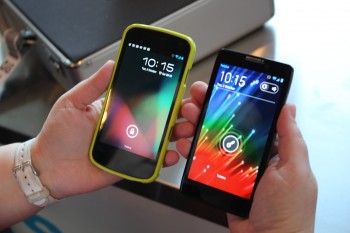
In an impressive (or perhaps a lack-of-warranty-accountability) demonstration of the P2I waterproof coating, a rep poured a glass of water across the front and back of the device, which soldiered on through the ordeal and didn’t miss a beat (though it DID pick up a few wayward on-screen taps). An onlooker asked about the USB and headphone jacks – they’re covered internally too, although I wouldn’t want to be the one to test it.
The phones also have an aluminium frame, making them pretty solid despite their thin profile, and allowing the reps to give them a pretty good hammer on the metallic surface of the demo desk.
Motorola’s launcher is interesting, and reflects their desire to simplify the daunted feelings users experience after being dumped at Android’s home screen. The homescreens follow a left-to-right arrangement a la iOS, but there’s only one screen when you start the device up. If you swipe left, you’ll find a very useful Quick Settings screen, which lets you perform basic power management and switch things on and off. It’s a welcome evolution of the power control widgets most of us have on our homescreens or in our notification trays.
If you swipe right from a homescreen, you’re led into an “add screen” wizard which allows you to add a screen from preset templates with icons pre-configured, or start from scratch. It’s a user-friendly approach to adding homescreens and alleviates the “where am I?” confusion that can arise from an accidental swipe when users are unfamiliar with their homescreen layouts.
The devices feel snappy and responsive, although it’s noticeably Ice Cream Sandwich – we’re not seeing “Project Butter” level responsiveness here. It’ll be interesting to see what Jellybean brings to these devices, given that they are running pretty much stock Android (“vanilla”, as the rep put it to us) albeit with a few icon changes. There was a slight stutter in the multitasking app list display, although that was hardly the norm.
There was also a useful Car Mode with large buttons for easier access to functionality.
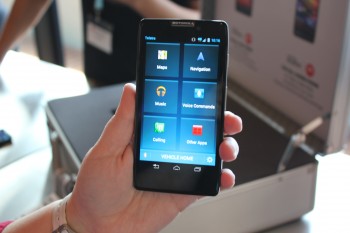
Some other observations from our time with the phone:
- The device takes micro SIMs. Interestingly, they’re hot-swappable, and the software opens up a data settings panel when it detects a new SIM.
- The bootloaders are unlockable – you can do this through the MOTODEV site. If you unlock your bootloader, you’ll void your warranty – but Motorola won’t stop you.
- Although Motorola had devices on hand at the US launch running Jellybean, the demo units here were definitely running Ice Cream Sandwich.
- Tia also received a call from a friend of the Motorola rep while handling the Razr HD. Oops! (It wasn’t a HD voice call, unfortunately)
Accessories
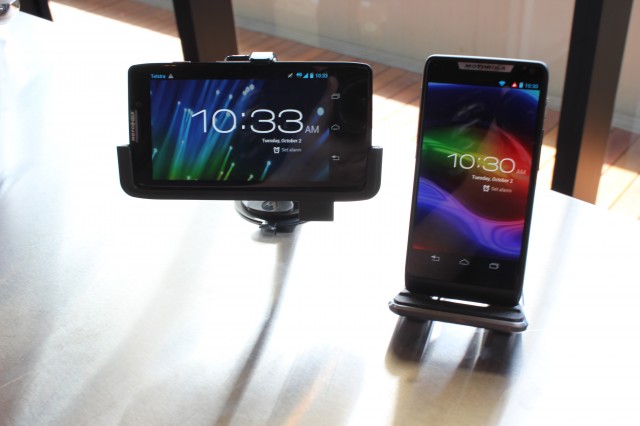
There were two accessories on display – a Desktop Stand, and a Windshield Mount. Both are available from Motorola directly, no word on in-store availability from Telstra.

The Desktop Stand is actually quite a nice device – it’ll hold either a portrait device leaning on the pad at the back, or a landscape device on fold-down clips. You can thread a USB cable through it and it has quite a good heft and weight to it, so your phone won’t overbalance it. I’m tempted to get one for myself.
Price: $40
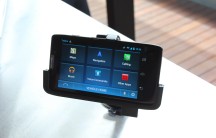
A Windshield Mount is a pretty standard thing these days. These ones hold it in landscape and have a USB plug built in so it can charge your phone. A sturdy ball joint allows you to move the device around for the best viewing angle.
Price: $70
As mentioned above, we have a Razr HD for testing, so we’ll be posting more detailed thoughts on the device soon!
At last check, Telstra hasn’t posted the phone on their site yet – but they did provide an unboxing video:
[youtube http://www.youtube.com/watch?v=riYwA87VmiU&w=560&h=315]
Are you planning to get a Razr HD? Waiting for the M? Or is there something else out there with your name on it? Let us know in the comments!




